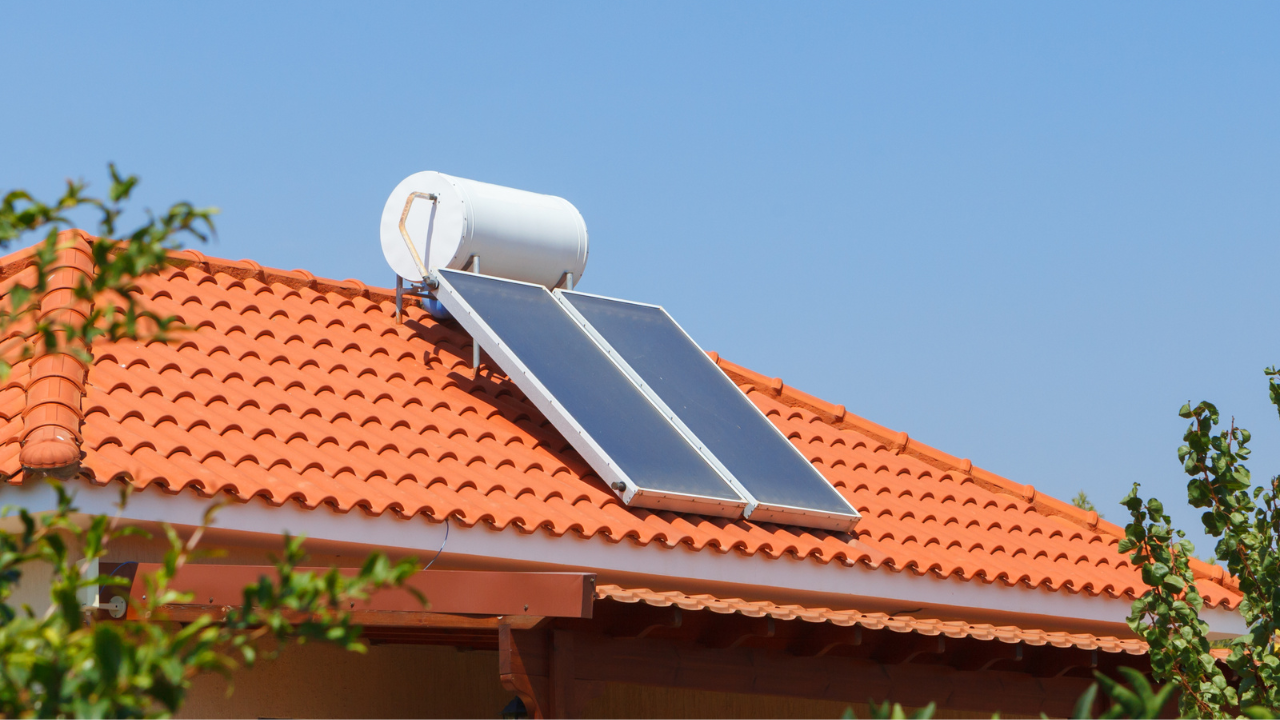How solar thermal works
The solar thermal system uses sunlight to transform solar energy into thermal energy.
The only source of energy used is that of the sun. This is especially true for natural circulation solar thermal. Homes that use forced circulation solar thermal, on the other hand, have a minimum absorption that derives from the operation of a circulator that regulates the temperature of the water inside the boiler.
Solar thermal is commonly used for the production of domestic hot water, although some systems are also used for heating rooms in winter. Let's see in detail how they work.
Solar thermal for hot water
The main components of the system are the thermal solar panels and the boiler. When the sun hits the surface of the panels, it heats a heat transfer fluid which circulates inside special pipes and then releases the heat to heat the sanitary water which comes from the domestic plumbing system.
The solar thermal system can use a natural or forced circulation system. In the first case, the boiler is positioned on the roof, near the thermal solar panels. In the forced circulation system, on the other hand, the tank is located inside the house, therefore a pump is needed to manage the circulation of the fluid.
Depending on the geographical area and in certain summer periods, this system can cover up to 100% of domestic hot water needs.
Solar thermal for heating
The fluid heated in the solar thermal panels can also be used to supplement the heating system and the general operation reflects that of the solar thermal for domestic hot water.
It is a system with a forced circulation system which involves the use of two tanks: one for the heating circuit water and the other for the domestic hot water. Alternatively, you can opt for a single boiler divided into two smaller ones inside: the one for domestic hot water in the upper part and the one for heating in the lower part.
How much does a thermal solar panel yield in winter?
When you decide to install a solar thermal system, some questions may arise. Specifically, the most widespread doubts concern the functioning of the system during the coldest months of the year.
In winter, the sun is often covered by clouds, but even if the radiation is lower than in the summer months, it continues to release its solar rays. Therefore, the yield of the system will be limited, but still able to supply heat to heat the sanitary water and/or the domestic environment. In any case, there is no risk of remaining in the cold or without hot water. In fact, if the solar panels do not produce enough heat to bring the water to the right temperature, the boiler is automatically activated.
When deciding to install a solar thermal system, however, it is good to take some elements into consideration. Specifically:
- the area where the house is located: solar radiation and weather conditions change according to the geographical area;
- roof orientation and inclination: the panels must be oriented towards the south and inclined at about 30-45°;
- adequate sizing of the system: the energy requirement varies according to everyone's different needs.
Why solar thermal is convenient
The installation of a solar thermal system allows you to approach energy independence at low costs. In fact, thanks to tax breaks, it is possible to acquire solar thermal panels at affordable prices and repay the investment over time.
In fact, the State provides, in the event of the existence of all the requirements, both a tax deduction of 65% through the Ecobonus (paragraph 346, article 1, Law 296/2006), valid for interventions that make it possible to increase the energy efficiency of the home, an incentive managed by the GSE (Energy Services Manager), the Conto Termico 2.0, with which it is possible to obtain up to 5 thousand euros for interventions aimed at improving energy efficiency for the production of thermal energy from renewable sources.
In general, solar thermal offers many advantages, including:
- reduction of CO2 emissions;
- high energy efficiency (up to 80%);
- possibility of combined use for DHW and heating;
- savings on bill costs;
- minimum maintenance;
- long life (on average 20 years);
- can be integrated into your traditional system;
- the various types of panels adapt to any home;
- the value of the home increases, together with the energy class.



